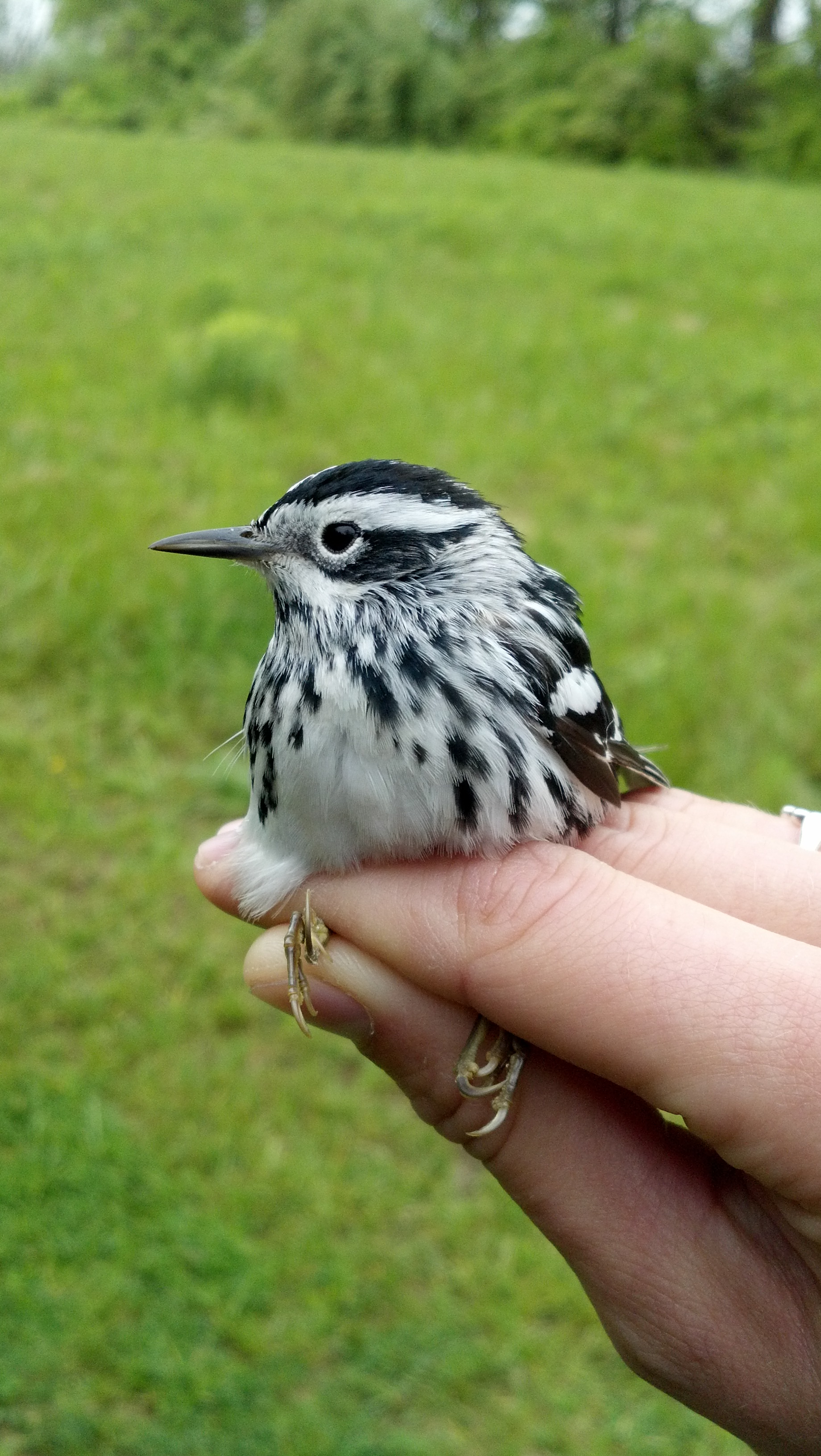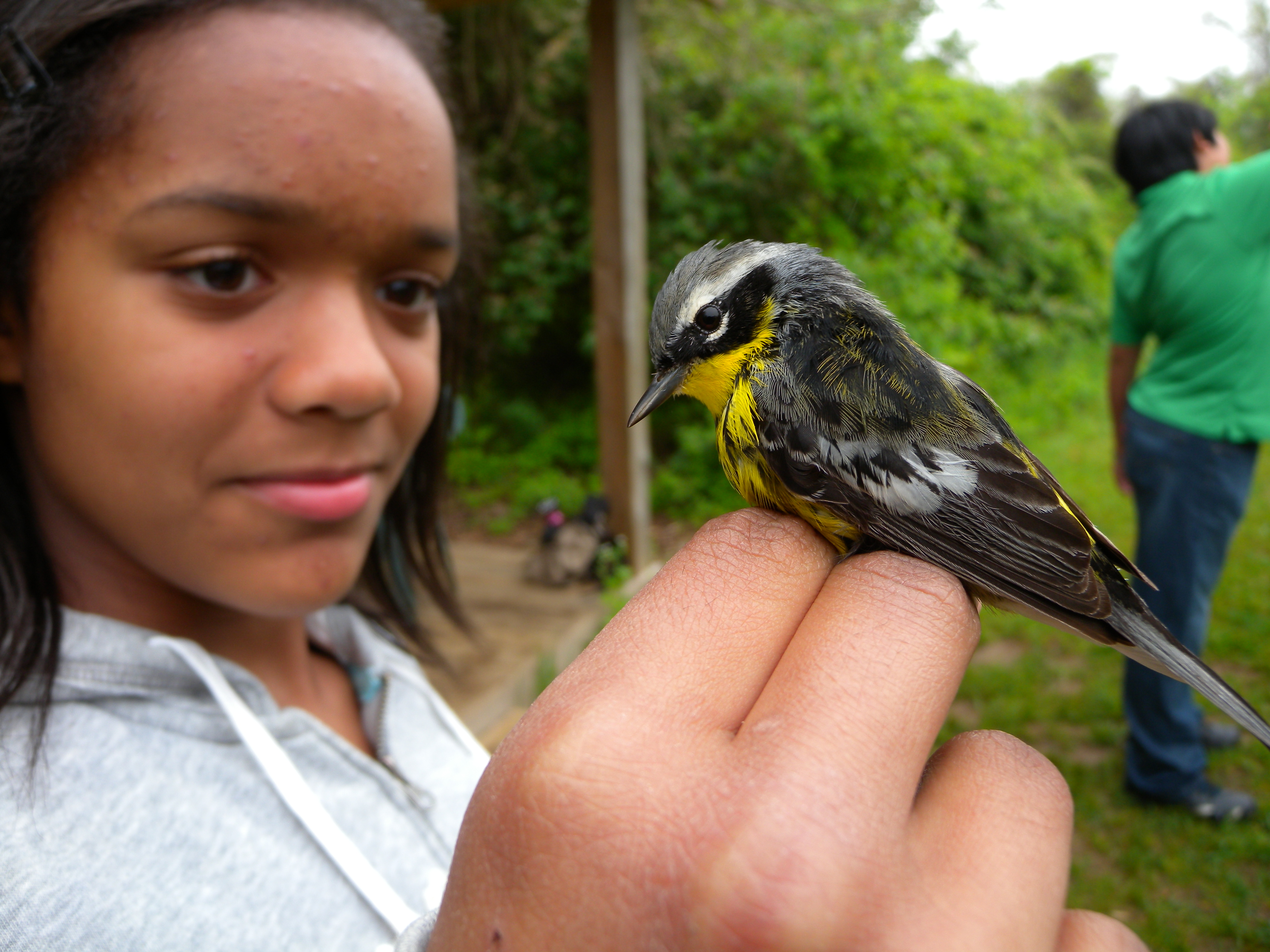
Strikingly different from the deep calico colors it flaunts during breeding season, the fall Chestnut-sided Warbler is still a sight to behold. Sporting a stunning lime green poncho and snow white underparts, it bears an uncanny resemblance to the present meadow landscape of Rushton, in which the rich yellow blanket of goldenrod is broken up by fluffy white seed tufts. Banders were thrilled to have two of these birds in the hand this morning to compare plumages of two different ages and sexes; this species has been absent from our banding records since September of 2015.

As a foliage gleaner of small stature, the Chestnut-sided Warbler is a bird that must stop frequently during migration to build fat stores from foraged insects in order to make it to Central American wintering grounds. The Veery on the other hand, like the one shown below, is a formidable athlete with powerful wings that can propel it 160 miles in one night —even over open ocean—on its way to central and Southern Brazil. The orange glow in the photo below is a large amount of subcutaneous fat stored in the furcular hollow (wishbone area) of a Veery we banded today at Rushton. It is the mighty four-cylinder engine that powers this ball of avian adrenaline.


Incidentally, the Veery pictured here weighed a whopping 47 grams, which was a good 12 grams or so more than the other Veeries we banded yesterday. The Rose-breasted Grosbeak, a hefty bird with a heavy seed-eating bill, only weighed 43.8 grams if that gives you a better idea of the size of this Veery. This extra weight is strictly from the stored fat, which birds only carry as fuel for migration.
All in all, we had a nice catch this week, despite having to cancel Tuesday because of the abnormally wet conditions and swampy net lanes. Our “make-up day” yesterday produced 40 birds of 13 species, and today’s total was 45 birds of 16 species. Enjoy the photo highlights below.

















